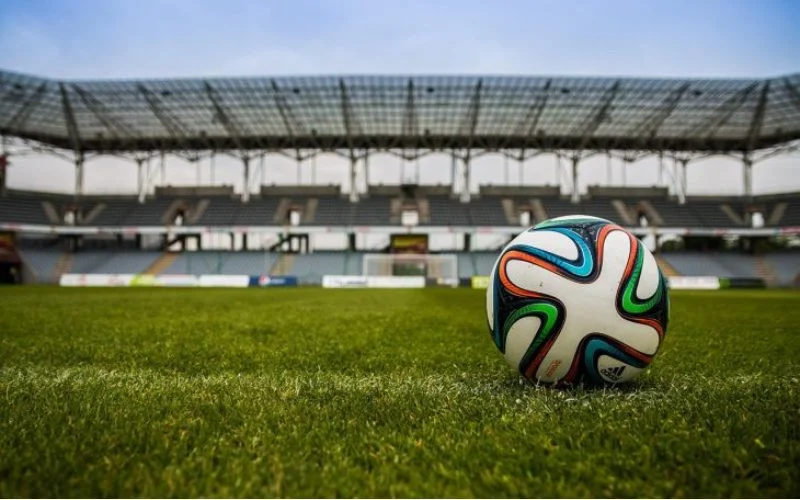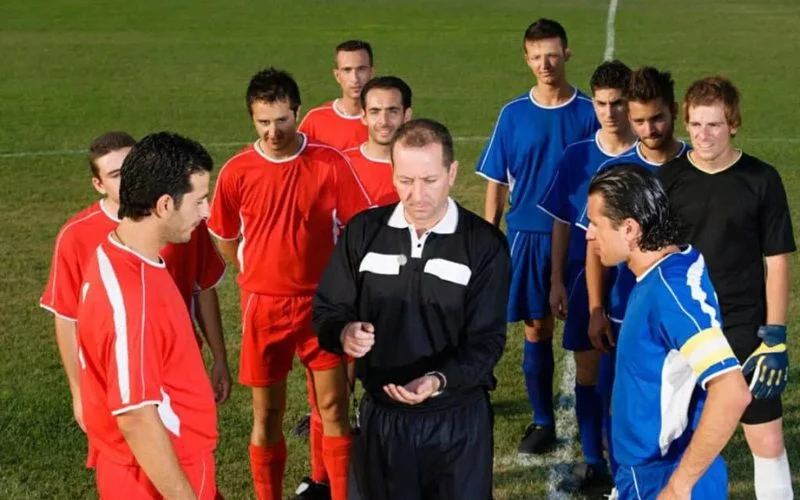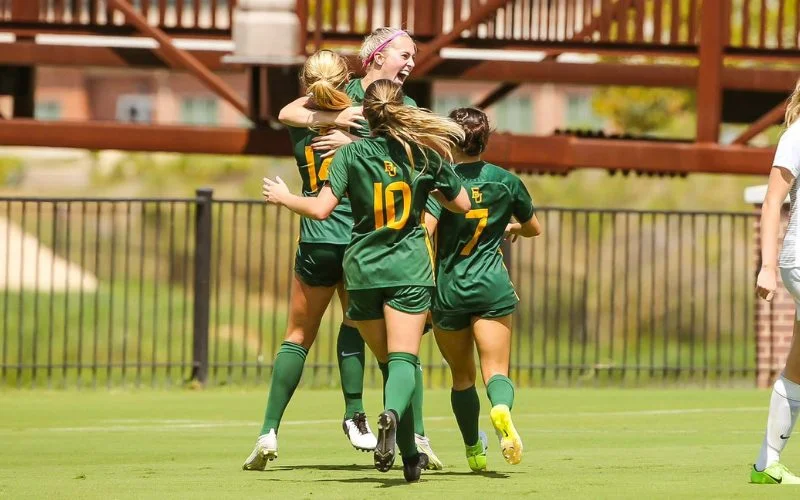Football, otherwise called soccer in the U.S., is an exciting game played worldwide. It is a game where 22 players chase after a leather fall to shoot it to their opponent’s post.
This game which ordinarily lasts for 90 days, can end in a tie depending on the tournament in play, as well as the stage of the game.
For league matches, a game can end in a tie, and so also for the first stage of the tournament, but at the knockout stage of any tournament, then a winner must emerge.
So today, we will be talking football or, as Americans call it: soccer.
Soccer And Its Rules

Soccer is arguably the most popular sport in the world, and it organizes the most-watched sport in the world, which is the world cup.
The game is played by more than 250 million people in more than 200 countries, especially in Europe, Central and South America, and Africa. It is also growing in leaps and bounds in North America and Asia.
Soccer is a contact game played by a team of 11 players against another team of 11 on a field. The game aims to move the soccer ball from where it is until it is successfully shot into the opponent’s goalpost.
The soccer game is played on a rectangular pitch between 110-120 yards long and 70-80 yards wide. The playing surface is grass.
Two upright posts are placed in the middle of the two opposite ends of the pitch. These posts are called goal posts, and they have a net connected to the posts and a crossbar to stop the ball after it has crossed the goal line.
The ball used in the game is round and weighs about 14 to 16oz, while the circumference measures 27-28″. A standard game lasts 90 minutes, split into two halves of 45 minutes, and in most cases, an extra time of a few minutes is added to make up for any delay or distraction during play like:
- Substitutions
- Injured player treatments
- Time wasting
- Disciplinary actions
- Drink breaks (1 minute at a maximum)
- VAR (video-assisted referee) checks
- Goal celebrations
Each team fields 11 players, of which 1 is the goalkeeper, whose primary function is to catch balls to prevent them from getting into their post.
The other 10 are outfield players specializing in defending the ball from entering their goalpost and attackers who trust to score goals by playing the ball into their opponent’s post.
The team that scores the most goal after 90 minutes wins the game (that is for regular season games). Still, for the knockout stage of a competition, an additional 30 minutes, split into two halves of 15 minutes each, is awarded if the regular play time ends with no winner.
After the additional time, otherwise called “extra time,” no winner emerges. Then the game is decided by a penalty shootout.
Points are awarded in soccer not based on how many goals were scored but on who won, who lost, and if the game was a tie (it is called a draw).
Any team that scores more goals than the opposing team wins the match and gets awarded the maximum number of points: 3. The losers get no points. If there is a draw, then each team gets awarded a point.
What Constitutes An Infringement In Soccer
When there is an infringement (it is called a foul) in the course of a game, there are different penalties that apply.
Apart from the goalkeeper, when they are inside the penalty box, no other player is allowed to touch the ball in the course of play, and if anyone does, then the opposing team gets awarded a free-kick.
A free kick means the opposing team can attempt to score when the referee signals for play to continue, and the position from where the shot is taken is the exact position where the foul occurred.
If the infringement occurs within the penalty box, a penalty kick is awarded, in which case a player tries to take a shot from the penalty box with only the goalkeeper to catch the ball.
In the course of play, and the ball goes out of the pitch, the opposing team player can throw in the ball for the match to continue. It is the only time outfield players are permitted to touch the ball with their hands, and they must return the ball to play while holding it with both hands and feet on the ground.
The ball is thrown from the exact position from where the other team player shot it out of play. If a player deliberately trips, punishes, or verbally confronts an opponent, a free kick can be awarded depending on the integrity of the action.
If the ball crosses the touchline with a shot from the attacking tram, then there is a goal-kick in which the goalkeeper of the opposing team kicks the ball, which is placed on the edge of the six-yard box (the smaller rectangle inside the penalty area)
The Role Of The Referee In Soccer
The role of the referee in soccer is to enforce the game’s laws. They work with two assistant referees who stay on the touchline of the opposite sides of the pitch and in the opposite halves. For a professional game, there is a fourth referee.
The referee is the only official inside the playing area, and they to players using a whistle. If a player commits what the referee believes is a serious infringement, the referee can show the player a yellow or red card.
The yellow card is called a booking, it is a card that warns a player to be careful, but if the player remains adamant and still commits another Infringement, then he is given another yellow card which now amounts to a red card, and then is sent off the field of play without any substitution.
A player can be shown a red card for just one infringement if the referee believes it is a grave offense, in which case the player leaves the pitch without any replacement. Below is some infringement that deserves a yellow or red card:
Yellow Card Is Awarded If A Player
- Holds and keeps holding an opponent while the game is in play.
- Recklessly charges toward an opponent.
- Handles the ball intentionally
- If a player makes an action, that can risk an injury to another player.
- If a player impedes the progress of an opponent on purpose.
- If a player breaks up an attack where there is the possibility of creating a scoring chance.
- If a player pretends that they have been fouled or injured to punish the opponent.
Red Cards Are Issued If:
- Violent behavior or conduct.
- That was serious foul play.
- When a player Spits at a person.
- A Deliberate handball that denies a goal-scoring opportunity.
- When a team is denied an obvious goal-scoring opportunity.
- When a player uses offensive, aggressive, or abusive language or gestures.
- If a player gets two bookings or receives a second caution or yellow card.
Can A Soccer Game End In A Tie?

A soccer game can end in a tie after 90 minutes (plus extra time) of a full-time game, but this is the case with league matches, in which case the two teams get the point apiece.
The game cannot end in a tie for the knockout stage in competition and tournament. Rather an extra time of 30 minutes is played to get a winner, and if there is a deadlock, the winner gets decided by penalty kicks.
In a league, if at the close of the season and the 2 top teams are level on points, their goal difference will determine which is crowned the winner.
Goal difference is the difference between the number of goals a team scored minus the number of goals they conceded. The team with the higher goal difference is crowned the league champion.
If the two teams have the same point and goal difference (which is most unlikely), then a one-off tie-breaker game may be used.
Below you will find some soccer cup competitions and how they deal with a tie:
FA Cup
For an FA cup game, any match that ends in a tie up to the 5th round is replayed, and if after 90 minutes no winner emerges, then the game goes into extra time of 30 minutes, and subsequently penalty kick to determine the winner.
After the 5th round of play, there are no match replays after a tie; instead, extra time is given, and penalty kicks are taken.
League Cup
For league cups, no extra time not penalty is awarded when there is a tie. However, the final game is an exception to this rule because extra time and, if need be, penalties are taken to determine the winner.
European Champions League Tie Break
The Champions League begins with a league format in which four teams in each league play home and away games, after which the points they earned are cumulated, and the team with the higher point proceeds to the next phase of the game. In the second game, if the teams are tied, the team that scores more away goals will win.
Soccer World Cup
If the World Cup matches after the group stage ends in a tie, the. Then the game goes into an extra time of 30 minutes to determine the winner, and if there is still a tie after the extra time, penalty kicks are taken until the winning gets the trophy.
Conclusion
Soccer is an exciting game to watch, and that is why it is the most popular sport ever. The game’s rules are simple, but how they apply in different competitions differs.
Helpful Links:
- How To Drive In Basketball
- How Do You Play and Win a Swingball Game?
- How Do You Make a Wiffle Ball Strike Zone?
- What is the Difference Between Spalding Zi O and Zi O Excel?
Soccer games can end in a tie if they are not part of a knockout round, in which case each team gets the point. For knockout matches, ties are broken by going for extra time, and penalty kicks are taken if need be.
Kindly reach out to people by sharing this post on social media.
If you liked this article, then please follow us on Facebook, Instagram, and Pinterest.

